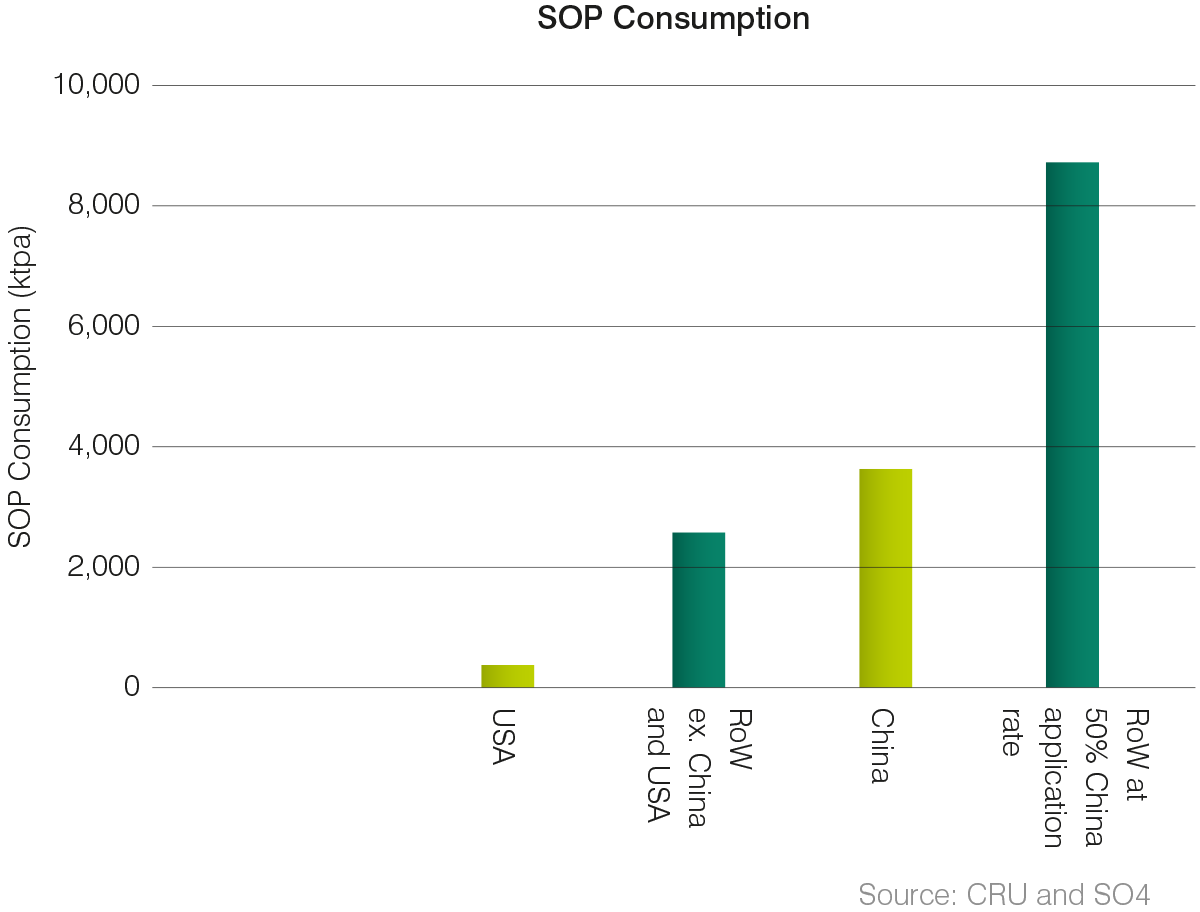A bifurcated market with significant growth potential.
SOP Market
Sulphate of Potash (SOP, chemical formula K2SO4) is a source of low-chloride potassium favoured by growers of chloride intolerant crops. These crops are typically higher value fruit and vegetable crops such avocados, strawberries, citrus and tomatoes. As living standards improve, consumption of these crops increases at a faster rate than broad acre staples such as wheat and rice. This dynamic, in conjunction with a general under-application of low chloride potassium fertilisers globally underpins the growth potential of the SOP market relative to other crop nutrients.
More than half of global SOP production is derived by reacting Muriate of Potash (MOP, chemical formula KCl) with sulphuric acid in a Mannheim furnace at temperatures above 700 degrees celsius, yielding both potassium sulphate and hydrochloric acid. Due to the high input costs, energy intensity and waste disposal costs of this process, it is typically higher cost than primary SOP production from brine evaporation.
Global SOP consumption was 7mt in 2020 and has grown at a CAGR of 6.5% over the past 10 years (CRU). The majority of SOP is consumed domestically in the country where it is produced or exported regionally, with seaborne trade expected to make up only 2.2mt (30%) of the market in 2020. Around 64% of seaborne exports come from Western Europe reflected by the North West Europe index being the major price reference point for the industry.
The market for SOP has significant potential for growth, with the majority of the world materially underapplying SOP relative to its chloride sensitive crop planted area. SO4 calculates that if the world applied SOP to chloride sensitive crops at just half the rate as market leaders USA and China, it would equate to an incremental 6mt per annum of demand and triple the current seaborne market.


